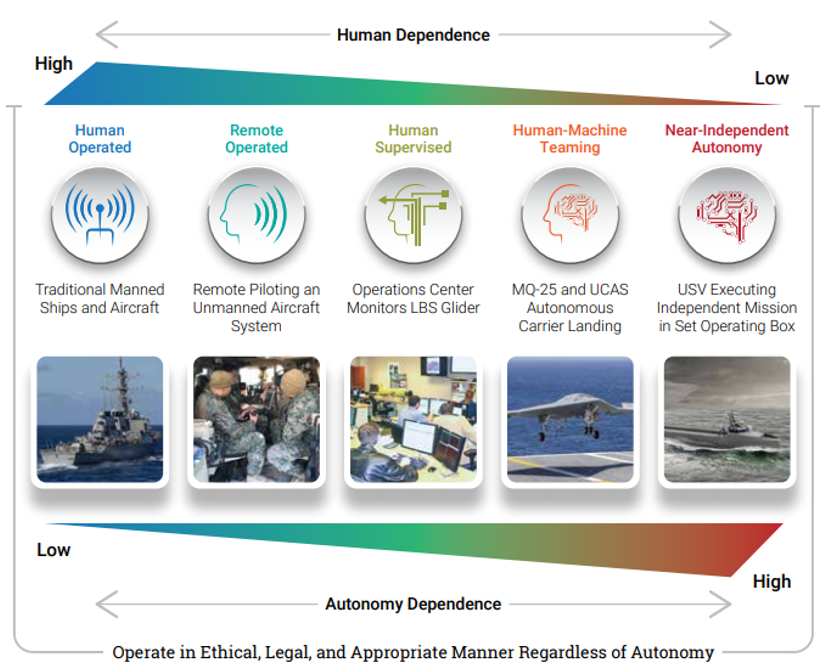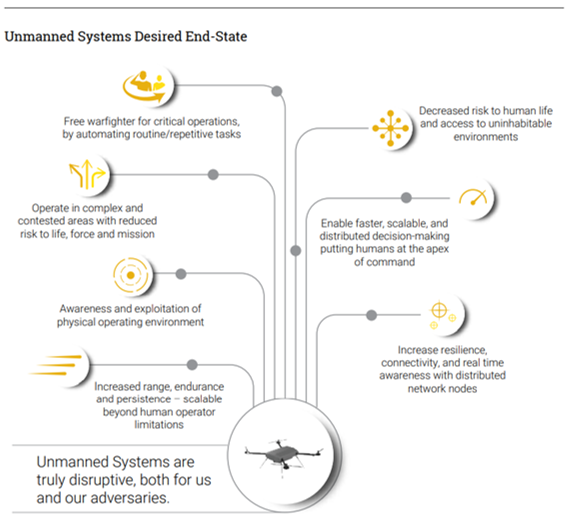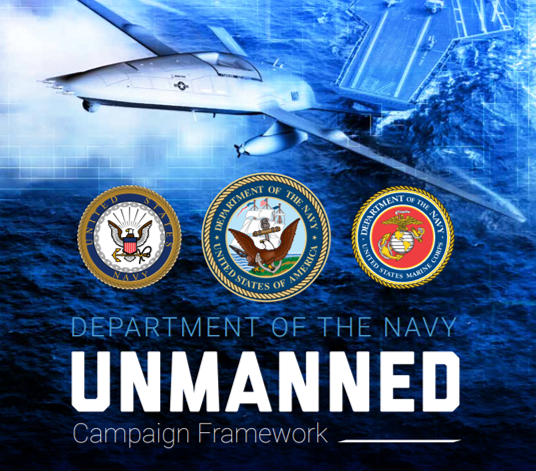US Navy Reveals Unmanned Campaign Framework
Autonomous technology is increasingly becoming an indispensable element of modern war. More numerous and advanced systems are increasingly making their way into not just the arsenals of major powers but also into the doctrinal and strategic thinking of their military planners and warfighters. In this context, the US Navy has just released a document titled “Department of the Navy Unmanned Campaign Framework”. The document has five main goals:
- Advance manned-unmanned teaming effects within the full range of naval and joint operations.
- Build a digital infrastructure that integrates and adopts unmanned capabilities at speed and scale.
- Incentivize rapid incremental development and testing cycles for unmanned systems.
- Disaggregate common problems, solve once, and scale solutions across platforms and domains.
- Create a capability-centric approach for unmanned contributions (platforms, systems, subsystems) to the force.

A graphic from the report showing the spectrum of system autonomy.
The nearly 40-page-long report begins with messages from Secretary of the Navy, the Chief of Naval Operations and the Commandant of the Marine Corps. What follows is divided into three sections. These explain the importance and reasoning for the campaign, give an overview of current unmanned capabilities and provide a comprehensive look into how the navy plans to reach its end goal for unmanned operations (respectively). The opening section begins with:
“It is imperative that we employ new and different strategies to win the future fight. Unmanned concepts allow us to rewrite the narrative on traditional warfare. Through a capabilities-based approach we can build a future where unmanned systems are at the front lines of our competitive advantage. The Naval force needs to move toward a capability-centric proactive environment able to incorporate unmanned systems at the speed of technology, to provide maximum agility to the future force.”
Thus, the navy is launching a “campaign” to accelerate the integration of unmanned systems at all levels, from the tactical to the strategic. It is meant to be more than just an abstract concept:
“A vision alone will not bring about change. The Campaign will need advocacy and action to succeed in its vision. Central to the campaign is the creation of an enduring and dynamic plan of action, accountable through a concentrated group of senior authorities.”

In terms of specifics, the report includes calls for an approach to innovation built around developing specific capabilities rather than a platform-centric approach as is currently the case. “Currently we resource independent system solutions, but need to drive ‘solve once and scale’ mindsets”. Such capabilities could include an unmanned logistics system capable of “multi-range, multi-payload, ship-to-ship, ship-to-shore, and land-based cargo transport options” and super swarms “of overwhelming (air, surface, and subsurface) forces”. The Coyote drones the Navy has recently ordered from Raytheon could prove themselves useful in the later role.
Of course, the report has a lot more to say. The full document can be accessed here.

